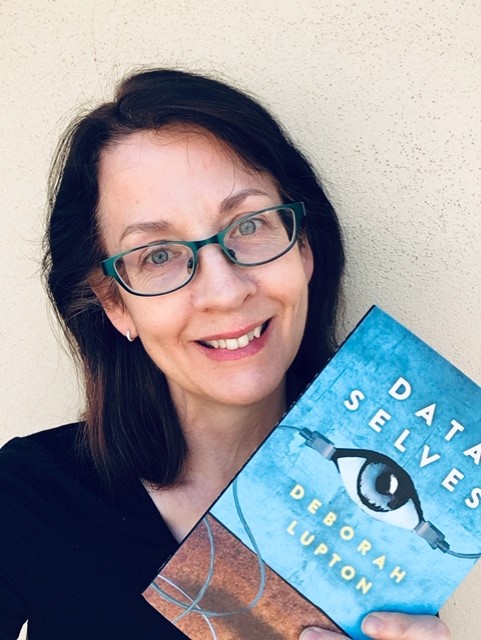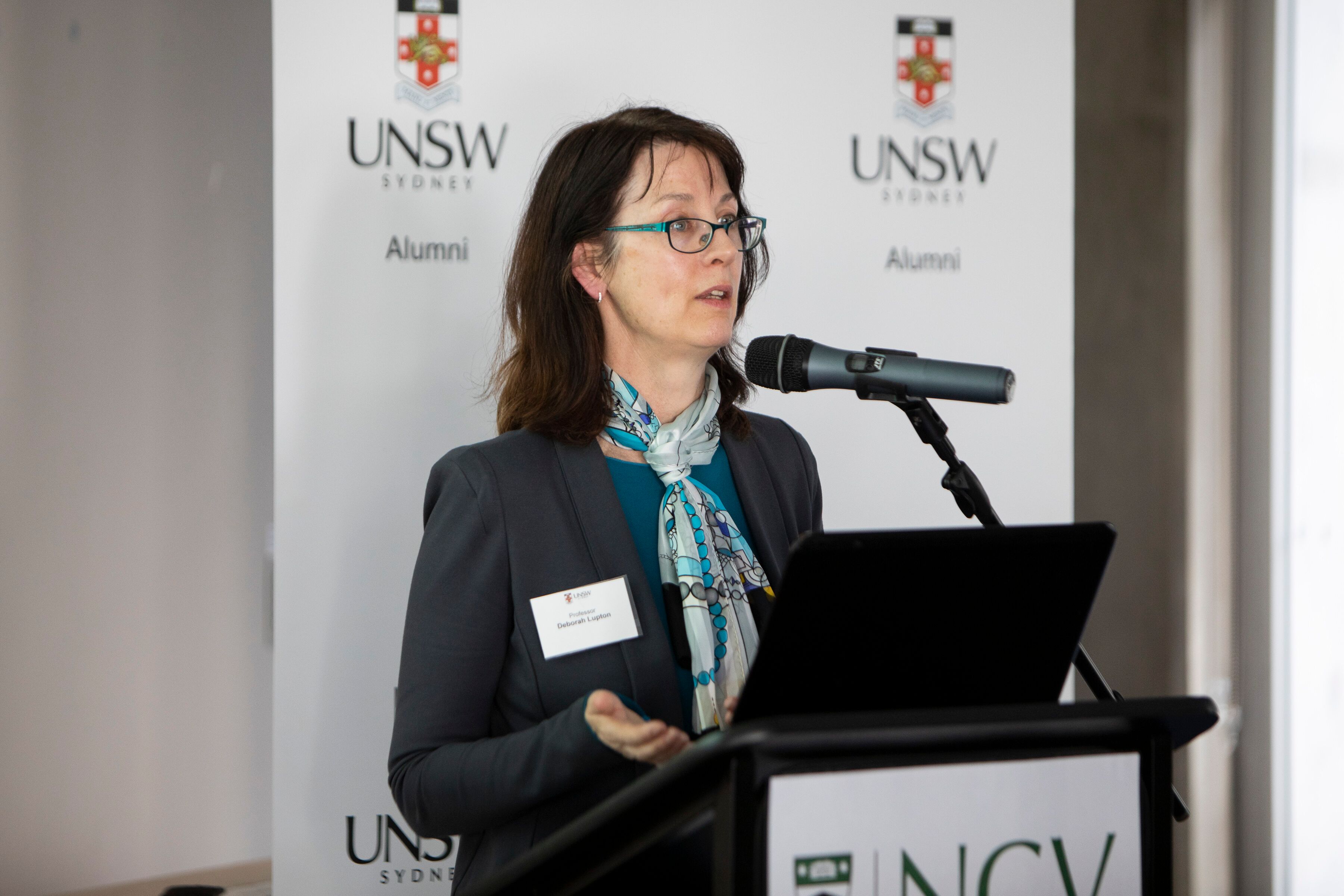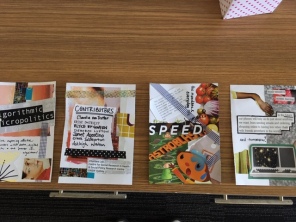
My latest book, Digital Food Cultures, co-edited with Zeena Feldman, has now been published with Routledge, as part of their Critical Food Studies Series. The abstracts and authors of each chapter are listed below. A book preview on Google Books is available here.
1. Understanding Digital Food Cultures: Deborah Lupton
This chapter introduces the book and provides a comprehensive overview of previous scholarship on digital food cultures. The five main themes into which the twelve other chapters are grouped are identified: bodies and affects; healthism and spirituality; expertise and influencers; spatiality and politics; and food futures.
2. Self-Tracking and Digital Food Cultures: Surveillance and Self-Representation of the Moral ‘Healthy’ Body: Rachael Kent
No longer defined in opposition to illness, ‘good’ health as representative of lifestyle correction has become a central discourse in international health promotion strategies for many decades. This neoliberal discourse positions the citizen as a consumer, who self-regulates to make the ‘right’ ethical decisions in the management of individual self-care. Social media are key platforms to represent such ‘healthy’ lifestyles through the surveillance of food and consumption practices, as well as other health-related content. Through a critical discourse analysis of semi-structured interviews and guided reflexive diaries, this chapter explores how practices of food and health self-representation on Facebook and Instagram, and through the use of self-tracking apps, enable the performance of a moral ‘healthy’ body and identity, constructed by participants through carefully balanced inclusion and exclusion of ‘healthy’ and ‘good’ versus ‘bad’ or ‘cheat’ foods and lifestyles. The empirical findings explored both the qualitative and quantitative self-representations and practices of self-tracking in managing the body and health. Over time, however, the burdens of tracking health behaviours and the self-regulation promoted by these technologies tied health and lifestyle to ethical parameters of ‘good’ and ‘bad’ behaviours, influencing participants’ sense of wellbeing and mental health.
3. Carnivalesque Food Videos: Excess, Gender and Affect on YouTube: Deborah Lupton
Food-related content features highly on YouTube. Some genres of YouTube food videos go beyond ‘how-to-cook’ content by focusing on practices of excessive and transgressive preparation or consumption of food: or what I characterise as ‘carnivalesque’ food videos. In this chapter, I take up feminist new materialism theory to examine the ways in which these videos draw on gendered concepts of food and embodiment, and work to generate and circulate powerful affective forces. In my analysis, I present two case studies of carnivalesque food YouTube videos: the ‘cheat day’ videos created by fitness and nutrition influencer Stephanie Buttermore and the cooking videos that feature on the ‘bro’-style Epic Meal Time channel. I contend that the expression and appreciation of excessive food preparation or consumption in these videos offer a way for content creators and their audiences to express and celebrate their longing and desire to indulge in the fantasy of revelling in the sensory delights of forbidden food with no guilt or shame. Simultaneously, however, these videos reproduce sexualised stereotypes of hyper-femininities and hyper-masculinities and surface forceful affective undercurrents of anxiety and ambivalence concerning excessive or ‘wrong’ food consumption, revealing the fraught nature of contemporary digital food cultures.
4. You Are What You Instagram: Clean Eating and the Symbolic Representation of Food: Stephanie Alice Baker and Michael James Walsh
Food and dietary choices operate as a central mode of identification, a way to define the self in relation to what we consume. These modes of identity are increasingly communicated on Instagram, using digital photography to present the self visually online. In this chapter, we explore the meanings and discourses around ‘clean eating’ on social media. We perform visual content analysis of food images on Instagram to examine the social and cultural meanings of clean eating and food. Drawing upon and developing cultural approaches to social interaction, we employ the concept of the ‘affirmation ritual’ to understand how status and identity are established online. We argue that eating practices and preferences are displayed on Instagram to represent an ideal self to one’s social network. Despite the capacity for user-generated content to resist and reframe social identities, we contend that the curation of clean eating practices on Instagram reinforces the relationship between diet, status, gender and identity.
5. Healthism and Veganism: Discursive Constructions of Food and Health in an Online Vegan Community: Ellen Scott
The digital realm is a crucial site of discourse and meaning construction for vegans. Online forums are popular vegan spaces, where much discussion concerns the supposed health benefits of vegan diets. In this chapter, I take a cultural sociological perspective, which acknowledges food and health as symbolically embedded with significant cultural meanings. Discourses of food and health within a popular vegan discussion forum are analysed and found to significantly align with ‘healthism’, a moral imperative for health.
6. Working at Self and Wellness: A Critical Analysis of Vegan Vlogs: Virginia Braun and Sophie Carruthers
The idea of eating a particular restricted diet for personal health and wellbeing, or environmental, or ethical and/or religious/cultural reasons, has a long history. Recently, very restrictive eating approaches – such as paleo, clean, and raw diets – have gained traction in and beyond the west. The context for these differs quite radically from previous eras: digital and social media cultures and online modes of dissemination provide an accessible, potentially democratised space in which to present narratives of food, ‘healthy’ eating and the self. Veganism appears regularly in social media, but as a mode of restricted eating potentially occupies a different space. With an interest in the ontological, identity and socio-political work done around such ‘wellness diets,’ we analyse vegan vlogs on YouTube as a digital site of food meaning-making, demonstrating that popular producers – mostly white women – locate their practice primarily within health and wellness discourse, in contrast to more socio-political framings for veganism.
7. A Seat at the Table: Amateur Restaurant Review Bloggers and the Gastronomic Field: Morag Kobez
Digital media have enabled amateur food bloggers to make a significant contribution to the gastronomic field in recent decades. As a prominent subset of foodie culture, ‘serious leisure’ food bloggers construct public identities and participate extensively in the discourse around restaurant dining. This participation encroaches on the discursive territory previously occupied by a small number of elite professional food critics, creating a hierarchy of cultural intermediaries in a larger and more contested gastronomic field with diffuse boundaries. While amateurs continue to take cues from professional critics, evidence shows that they apply robust ethical standards in their work. Evidence also demonstrates that they are motivated by passion and enjoyment, rather than being driven by commercial considerations – despite assertions by professionals to the contrary. As such, they may be considered agents and cultural intermediaries in the gastronomic field, alongside professionals. This marks a profound transformation of the field brought about by the proliferation of online and digital media.
8. I See Your Expertise and Raise You Mine: Social Media Foodscapes and the Rise of the Celebrity Chef: Pia Rowe and Ellen Grady
In the post-truth era reflected in much of the contemporary media and political landscape, there has been a rise in the number of self-proclaimed health experts, utilising social media to promote their views. Anyone, regardless of their professional background, can occupy this space. As an example, some ‘celebrity chefs’ actively construct and mediate discourses about both ‘good food’ and who should be trusted as authorities on the topics of nutrition and health. While overtly appearing to promote good health, these experts can publicise potentially harmful messages, particularly when their influence in public health debates can surpass that of qualified health practitioners. Australian celebrity chef Pete Evans exemplifies this new development. Best known for his paleo diet advocacy, Evans repeatedly challenges the Australian Dietary Guidelines (NHMRC 2013), seeking to replace them with his own. Using illustrative examples from both Evans’ own Facebook posts, as well as from mainstream media coverage reporting on Evans over a one-year period around the publication of his controversial co-authored book Bubba Yum Yum, we examine the self-construction of expertise in the digital age and discuss the celebrity influencers’ role in the contemporary landscape of mediated food governance.
9. ‘Crazy for Carcass’: Sarah Wilson, Foodie-Waste Femininity, and Digital Whiteness: Maud Perrier and Elaine Swan
In this chapter, we examine the food waste blog posts of Sarah Wilson, an Australian anti sugar and domestic food waste avoidance author and campaigner. To date, feminist food studies and food waste studies have neglected the digital representations of food waste and femininity, and in particular, intersections with class, race and whiteness. Our analysis shows how Wilson constructs what we call a foodie-waste femininity that mobilises repertoires of white bourgeois control, discipline and purity through her visual and verbal texts on her blog and her response to a Mail Online article. We show the ways in which Wilson’s foodie waste persona and the scorn it generates is premised on the racialised and classed histories of hygiene and cleanliness and of leftovers as contagious and contaminated, rendering her foodie waste femininity as fragile and unstable.
10. Are You Local? Digital Inclusion in Participatory Foodscapes: Alana Mann
The local food movement is the target of considerable critique for its failure to include socially excluded groups and individuals who experience systemic barriers to food access in its activities and concerns. Digital applications promoting local food frequently mirror what Prody (2013) refers to as the ‘monocultural rhetoric’ of the movement, which ignores cultural and socioeconomic differences and ethical issues concerning local, and global, food production systems (see also Moore & Swisher, 2015). This chapter presents a case for digital platforms and practices that not only challenge popular local food framings that reflect middle-class values and proclivities but also address wider questions of food justice. I argue that while digital technologies accelerate the capacity of food-sharing ecosystems and other food distribution platforms to contribute to community building and social connectivity, they rarely incorporate the voices of the most food insecure who often experience severe and multiple disadvantage and social exclusion. A better understanding of the relationship between digital and social exclusion can inform the development of technologies that build the capacity of food insecure individuals to develop connectedness and engage in the co-creation of participatory foodscapes in their communities.
11. Visioning Food and Community Through the Lens of Social Media: Karen Cross
Food consumption has long formed an important part of community making and this is apparent also within the development of digital food cultures. This chapter provides a specific case example of urban regeneration set within the region of South London, demonstrating how digital identities and practices infiltrate the market space. In the chapter, I reflect on some of the problems that arise in the popularising of alternative food networks and their role in the reconstruction of community-based forms of consumption. I interrogate in particular the urban investments of new networks and market spaces and consider how they impact on community-based food consumption. Reflecting on how the language and aesthetics of social media provide a new frame for ‘visioning’ food and community, my discussion also considers how network imaginaries contribute to local planning and policy-making strategies and the wider implications these have for the future of food and community.
12. Connected Eating: Servitising the Human Body through Digital Food Technologies: Suzan Boztepe and Martin Berg
Over the past few years, a new breed of digital food technologies has emerged. Utilising interconnected sensors, photo recognition, machine learning and artificial intelligence, these technologies provide so-called smart recommendations on eating right based on perceived individual needs. Using critical content analysis, this chapter analyses the ways in which three digital technology businesses present themselves and their offerings online. In so doing, we examine their marketing materials, such as websites, to unpack the underlying assumptions of their creators and the projected relationship between digital food technologies and healthy eating. The findings show that the business logic of digital food technologies induces servitisation of the human body through constant flow of food data. This logic favours and promotes an understanding of the human body as an entity that could be optimised through perceptively accurate nutritional data and standardised food. How this in turn prescribes highly personalised and controlled eating practices is discussed.
13. From Silicon Valley to Table: Solving Food Problems by Making Food Disappear: Markéta Dolejšová
From cooking, shopping, and growing to dining and dieting, digital technology has become a frequent companion of our day-to-day food practices. The diversity of products and services available on the food-tech market is broad, ranging from smart kitchenware to diet tracking apps and ‘biohacked’ food products. Investments in food-technology innovation are led by the corporate sector of Silicon Valley ‘foodpreneurs’ who started designing solutions for everyday food problems as well as complex food system issues. These food-tech solutions present opportunities for efficient food practices but also challenges to existing sociocultural frameworks of food production and consumption. In this chapter, I illustrate such contradictions through the example of Complete Foods — a powder-based food replacement originating from the Silicon Valley startup realm that enables quantified data-driven control over one’s diet. I discuss my three-year ethnographic study of the Complete Foods community and outline the risks and opportunities that the diet presents to day-to-day lives of its members. I frame my findings within the Silicon Valley food-tech innovation context.






 My new book
My new book 




 Ashleigh has launched the call for submissions for So Fi Zine edition #6 – So Fi Zine is a sociological fiction zine for arts-based research, creative sociology, and art inspired by social science. The zine publishes short stories, poetry, photography, photo essays, cartoons, and other creative works. Edition #6 will be published in November 2019 and is inspired by Deborah Lupton’s digital, creative, more-than-human and future oriented research. Pieces are invited that creatively explore sociological futures: bodies, spaces, disciplines and things. Submission info and previous edition of the zine can be found
Ashleigh has launched the call for submissions for So Fi Zine edition #6 – So Fi Zine is a sociological fiction zine for arts-based research, creative sociology, and art inspired by social science. The zine publishes short stories, poetry, photography, photo essays, cartoons, and other creative works. Edition #6 will be published in November 2019 and is inspired by Deborah Lupton’s digital, creative, more-than-human and future oriented research. Pieces are invited that creatively explore sociological futures: bodies, spaces, disciplines and things. Submission info and previous edition of the zine can be found